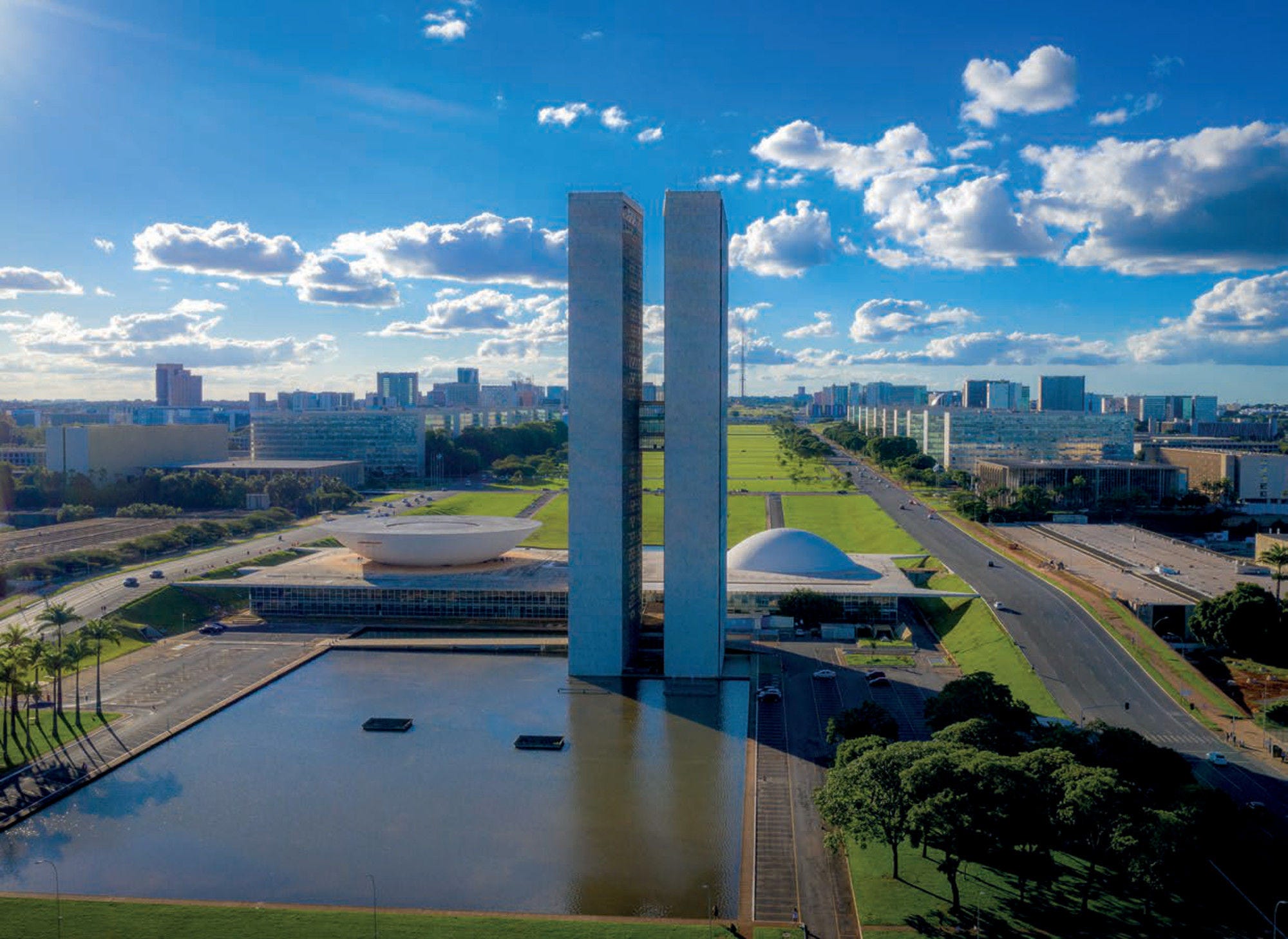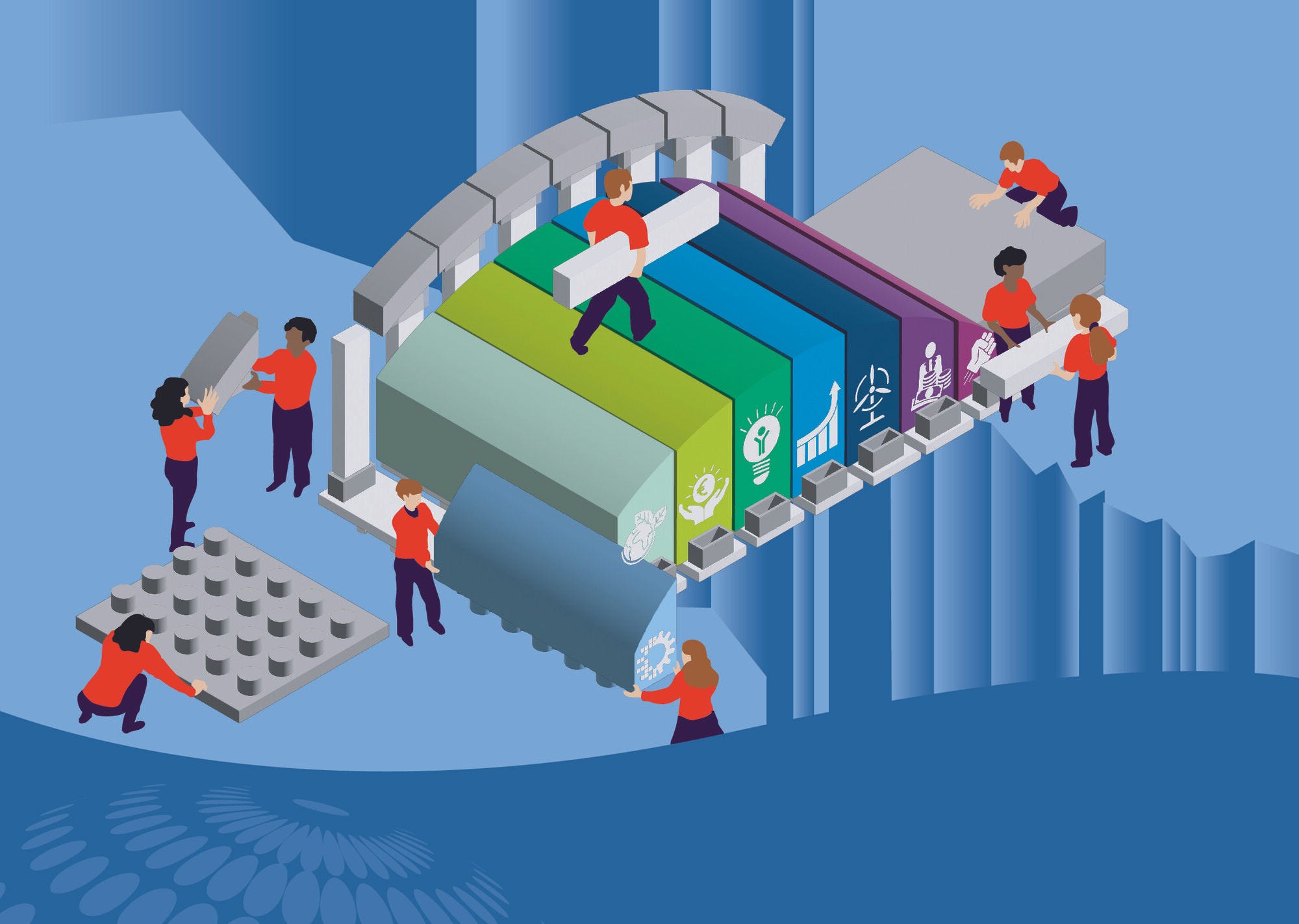The Brazilian economy rebounded strongly after the Covid-19 pandemic. Resilient domestic demand, supported by social transfers, continues to drive growth. Inflation is decreasing, providing room for further monetary policy easing. However, public debt remains high, calling for a credible fiscal framework and improved spending efficiency. The planned reform of the consumption tax system will reduce compliance costs significantly. Productivity has declined over the past decade, and rekindling it will require further structural reforms. Stringent regulations and administrative burdens in goods and services markets are hampering productivity growth, although recent reforms have addressed some issues. Supporting female labour force participation and reducing informality would improve labour markets. Expanding access to early childhood education, especially for single mothers and those with low incomes, can allow more women to enter the labour market and improve learning outcomes. Despite significant public spending on education, a more targeted resource allocation can help to address inequalities in opportunities. Enhancing infrastructure investment through better planning and coordination between federal and subnational governments would help to address longstanding infrastructure bottlenecks. A consistent enforcement of the Forest Code and the adoption of new technologies will be key for reducing greenhouse gas emissions.
OECD Economic Surveys: Brazil 2023

Abstract
Executive Summary
Brazil has had a strong recovery
The economy rebounded strongly in 2021 and in 2022. After a strong expansion in early 2023, growth momentum is now converging to the economy’s potential growth. Amid declines in labour market participation, unemployment has decreased to levels not seen since 2015.
GDP growth is projected to reach 3.0% in 2023 before slowing to 1.8% in 2024, driven by lower domestic demand (Table 1). Private consumption and investment will grow at a more moderate pace than in the past over 2024 on the back of tighter credit conditions and a global slowdown. A record harvest is bolstering growth, while the services sector is still recovering from the pandemic shock.
Table 1. The economy is slowing
|
% change unless noted |
2022 |
2023 |
2024 |
|---|---|---|---|
|
Gross domestic product |
2.9 |
3.0 |
1.8 |
|
Private consumption |
4.3 |
2.8 |
2.1 |
|
Government consumption |
1.5 |
1.8 |
1.3 |
|
Gross fixed capital formation |
0.8 |
-2.3 |
0.8 |
|
Exports of goods and services |
5.9 |
7.1 |
4.0 |
|
Current account balance (% of GDP) |
-2.9 |
-1.7 |
-1.6 |
|
Unemployment |
9.3 |
7.8 |
8.0 |
|
Harmonised consumer price index |
9.3 |
4.5 |
3.2 |
|
Harmonised core price index |
9.3 |
6.1 |
3.4 |
|
Fiscal balance (% of GDP) |
-4.6 |
-7.2 |
-3.4 |
|
Government gross debt (% of GDP) |
72.9 |
77.5 |
80.0 |
Source: OECD Economic Outlook 113 (database) and updates.
Fiscal policy reacted forcefully to the COVID-19 crisis, dedicating around 9% of GDP to emergency support measures, including income support to households and firms. Most of these measures have been withdrawn by now. Fuel tax exemptions introduced to cope with high inflation have also been mostly withdrawn. Higher income transfers for Bolsa Familia recipients have been made permanent.
Inflation has receded, mostly explained by lower food and energy prices. Russia’s war of aggression against Ukraine and the resulting global price surges fuelled inflationary pressures which then became more widespread (Figure 1). Inflation has declined since mid-2022, supported by lower fuel taxes, and core inflation has also declined. Slower credit growth and lower wage increases will reduce household income and contribute to lower inflation.
Risks to economic activity are balanced. Weaker growth in China, Brazil’s main trading partner, could reduce exports, while faster disinflation could allow lower policy rates and boost investment.
Figure 1. Food prices and transport costs including fuel prices drove the rise in inflation

Note: Others include categories of household items, clothing, education and communication.
Source: IBGE; and OECD calculations
The new fiscal framework and a tax reform will boost debt sustainability and growth
Public debt remains high compared to other emerging market economies. Ensuring its sustainability requires a credible fiscal framework and better spending efficiency. A planned reform of the fragmented system of consumption taxes will reduce compliance costs substantially.
Previous fiscal rules have not addressed widespread budget rigidities such as constitutionally mandated spending items, revenue earmarking and automatic indexation mechanisms (Figure 2). Therefore, fiscal space for policy priorities declined until becoming very small, and the rules were changed frequently to avoid breaching them.
The new fiscal framework, adopted in August 2023, is meant to address these challenges by combining more medium-term predictability with added flexibility. The framework establishes multi-year targets for the primary balance until 2026 and defines limits on real spending growth. The new framework also contains a mechanism to bring the primary balance back to target when deviations occur.
Figure 2. Mandatory spending limits the room for policy initiatives

Note: Annual aggregates of monthly data. The spike in other mandatory spending in 2020 was due to Covid-related spending.
Source: National Treasury; and OECD calculations
Brazil’s tax system is highly complex and distorts production decisions. Five different taxes on the consumption of goods and services are levied on sometimes overlapping bases and at different levels of government, with incomplete credits for intermediate inputs and substantial legal uncertainty, giving rise to long tax disputes.
A proposal currently discussed in Congress aims to consolidate the different consumption taxes into a unified value-added tax (VAT). This VAT would have simple rules and a common, broad tax base harmonised across states, full tax credit on all inputs and zero-rating for exports. The government has made this tax reform a key priority. Political challenges include the distribution of revenues across states, but a gradual transition and transfer mechanisms between states should help build a consensus for the tax reform.
Boosting productivity will be key to maintaining strong growth
Potential growth and productivity gains have declined. Reforming regulatory policies, a stronger engagement in international trade, increasing female labour participation and a stronger education and training system would boost potential growth.
Stringent regulations and high administrative burdens on markets for goods and services restrict competition and the entry of new firms, hampering productivity growth. Recent reforms have reduced unnecessary bureaucracy and regulations. However, barriers in services sectors are still higher than the OECD average.
Access to foreign markets and deeper integration into global value chains could be facilitated by lowering existing trade barriers. Average import tariffs are about eight times higher than in Mexico, for instance. Non-tariff barriers are also relatively high, including widespread local content requirements (Figure 3).
Figure 3. Non-tariff barriers are high
Coverage ratio

Note: Coverage ratio refers to the value of imports of commodities subject to non-tariff measures as a percentage of total imports.
Source: World Integrated Trade Solution database (WITS).
Female labour force participation and employment are about 20 percentage points lower than for men. Limited access to early childhood education is one barrier to women’s access to the labour market. Only about a third of all children under the age of three in Brazil have access to day care.
The pandemic has worsened the educational attainments of children from disadvantaged backgrounds. Despite high public spending on education relative to GDP, resources are not always targeted towards improving inequalities of opportunities. Moreover, participation in vocational education programmes remains low and post-secondary vocational education opportunities are limited.
Greening growth and building climate-resilient infrastructure will reduce greenhouse gas emissions
Strengthening the enforcement of the Forest Code, developing rural economies and incentivising the adoption of new technologies can help to reduce greenhouse gas emissions.
Deforestation, a major source of greenhouse gas emissions, has risen since 2019, although early indicators now suggest a decline in 2023. Stricter enforcement of the Forest Code, coupled with more adequate resources for enforcement agencies, are now expected to support national efforts towards reducing deforestation. The Brazilian government has recently committed to reach zero deforestation by 2030 in its nationally determined contribution to the Paris Agreement under the UNFCCC, as defined by Brazil’s Action Plan for the Prevention and Control of Deforestation in the Legal Amazon. Emissions from agriculture, the second-largest contributor to GHG emissions, come mostly from livestock (Figure 4). Better regulations and incentives for more sustainable production have substantial scope for reducing them. Carbon pricing mechanisms will also be key for emission reductions.
Figure 4. Deforestation and agriculture are the mains sources of greenhouse gas emissions

Note: Million tonnes of CO2 equivalent, 2021 or latest.
Source: OECD environment database; PNMC (6ª Edição), Ministério da Ciência, Tecnologia e Inovação; and OECD calculations.
Scaling-up infrastructure investment
Better planning, including tighter coordination across the federal and subnational governments, could strengthen infrastructure investment. Reducing risks associated with long-run infrastructure projects has the potential to attract more private and international financing.
The infrastructure damages caused by climate events are already detrimental to growth and represent approximately 1.3% of GDP in annual losses. Public infrastructure is particularly vulnerable to climate shocks amid a rapid, unplanned, and uncontrolled urbanisation. Frequent droughts and rising temperatures will create challenges for energy supply, particularly from hydroelectric sources.
Infrastructure investment has been low in international comparison and has even declined (Figure 5). Public spending on infrastructure has delivered results that have often fallen short of expectations over the last decades. Improvements in planning and project execution could substantially improve the performance of public infrastructure investment. Each year, more than 30% of public infrastructure projects are interrupted and either temporarily or permanently paralysed.
Most public sector investment is executed by subnational governments. States and municipalities often lack the technical capacities needed for infrastructure project preparation and procurement. In addition, local infrastructure plans are not always aligned with federal priorities and a consistent monitoring of infrastructure spending across different levels of government is difficult.
Opening up additional sources of private investment will be essential for filling infrastructure financing gaps in the medium run. Creating the appropriate framework conditions for private investment will require rethinking current risk sharing mechanisms and minimising risks related to changing policy settings and judicial uncertainty.
Figure 5. Public investment in economic infrastructure is low

Note: % of GDP, 2021 or latest. Economic infrastructure refers to water, energy, telecommunications and transport.
Source: Infralatam.
|
MAIN FINDINGS |
KEY RECOMMENDATIONS |
|---|---|
|
Adjusting monetary policy and improving fiscal policies |
|
|
Inflation and inflation expectations have been above target but are coming down as monetary policy has tightened substantially. |
Continue the gradual easing of monetary policy provided that the ongoing convergence of inflation with the target continues. |
|
Fiscal rules have been overly focused on the short-term. The previous spending rule has not been respected in recent years. |
Implement the new fiscal framework and reduce the public deficit to ensure the sustainability of public debt. Develop medium-term budget plans, with a rolling four-year horizon, and annex them to the annual budget law. |
|
The budget process is constrained by widespread revenue earmarking and mandatory spending floors, coupled with strong automatic indexation. |
Reduce mandatory spending floors and earmarked revenues. Index social benefits to inflation rather than the minimum wage. |
|
Budget amendments for individual parliamentarians lack systematic audits and exacerbate the disconnect between policy strategies and effective budget allocations. |
Put stricter limits on and audit systematically expenditures financed through budget amendments from individual parliamentarians. |
|
A fragmented system of overlapping indirect taxes generates extraordinarily high compliance costs. |
Consolidate all federal and subnational consumption taxes into a unified value added tax. |
|
Public procurement is vulnerable to corruption and can lead to public funds being wasted through higher expenses and infrastructure of lower quality. |
Improve whistle-blowers protection and continue implementing the National Strategy to Combat Corruption and Money Laundering. |
|
Boosting productivity growth |
|
|
Regulatory barriers in service sectors are high. Professional services are often reserved to members of professional associations. |
Reduce market entry barriers in professional services, including by abolishing exclusive rights for certain ancillary tasks. |
|
Despite recent progress, openness to trade in Brazil is still lower than in other emerging economies. Integration into GVCs remains concentrated in commodities. Trade barriers are high in international comparison. |
Pursue further reductions of tariffs and non-tariff barriers together with Mercosur partners, announced in advance and subject to gradual implementation. |
|
Female labour force participation and employment are about 20 percentage points lower than for men. |
Prioritise educational investments in the early years of schooling and expand access to early childhood education, giving priority to low-income households and single mothers. |
|
Labour informality is high at around 40%. The cost difference between informal and formal employment contracts contributes to informality. |
Devise a comprehensive strategy to foster formalisation, including through lower non-wage labour costs, better skills and stronger enforcement. |
|
Spending on active labour market programmes in Brazil is close to the OECD average, but it is mostly focused on less effective employment subsidies rather than training. |
Shift active labour market spending from employment subsidies towards high-quality training programmes that respond to labour market needs. |
|
Educational attainments are strongly related to socio-economic backgrounds, including race. Students from wealthier backgrounds are more likely to progress and benefit from fully subsidised higher education. |
Consider introducing means-tested tuition fees in public universities combined with targeted grants for disadvantaged students and other strategies to improve access to higher education. |
|
Greening growth |
|
|
Since 2004, greenhouse gas emissions have been increasing, driven by the recent upward trend of deforestation. |
Implement plans to establish a regulated carbon market (cap-and-trade) with a primary focus on industrial and agriculture sectors. |
|
Deforestation has risen since 2019, amid weaker enforcement including budget and staff cuts. These trends are now reversing and deforestation has come down. |
Continue to strengthen enforcement efforts to combat illegal deforestation. Ensure adequate staffing and budget of environmental enforcement agencies. |
|
The forest economy and payments for environmental services are underdeveloped. Rural communities often lack alternative revenue sources. |
Restore and further develop payments for environmental services. |
|
The Plan for the Consolidation of a Low Carbon Economy in Agriculture (ABC) has been the main instrument to ensure the continuous improvements in agricultural practices that reduced GHG emissions. |
Scale up the ABC plan to enhance existing incentives, R&D and technical assistance to reduce GHG emissions from agriculture. |
|
Brazil has 40 million hectares of degraded pasture and two thirds of direct agricultural emissions come from livestock natural emissions. |
Boost incentives for the abatement and soil sequestration of carbon and the restoration of degraded pastures, e.g. through carbon credits. |
|
The production of electricity is highly exposed to severe weather events, such as droughts, prolonged dry seasons, and rising temperatures. |
Further diversify renewable energy sources by increasing investments in wind and solar energy, as well as biofuels. |
|
Scaling-up infrastructure investment |
|
|
Infrastructure investment has been particularly low in international comparison and has even declined, and maintenance levels are low. |
Increase investment in infrastructure and maintenance, including in transport, energy, telecommunications, water, sanitation and urban mobility. |
|
Most public infrastructure investment is executed by subnational governments or SOEs, with often limited project management capacity. |
Expand technical assistance by BNDES to sub-national governments for infrastructure projects. |
|
Different groups of investors have different desired risk profiles and restrictions. Tailoring financial assets for infrastructure financing to different investor groups may allow tapping into new funding pools. |
Expand the use of structured financial instruments, project financing and carefully designed guarantees to attract a wider range of institutional investors, with the help of BNDES. |
In the same series
Related publications
-
 21 November 2024
21 November 2024 -
 Policy paper19 November 2024
Policy paper19 November 2024









